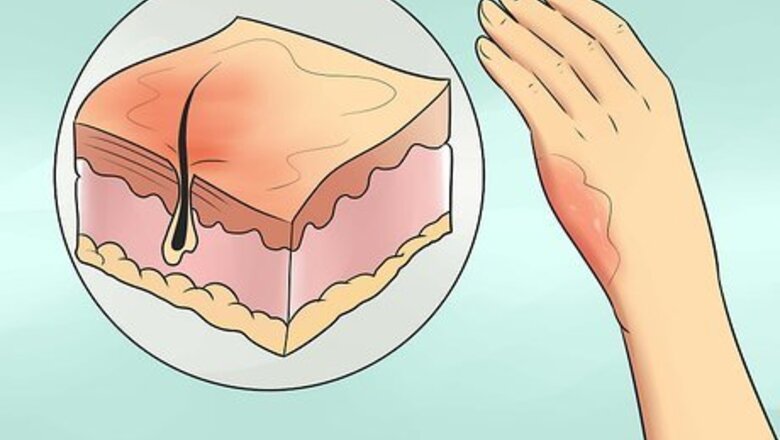
views
Categorizing the Severity of Your Burn
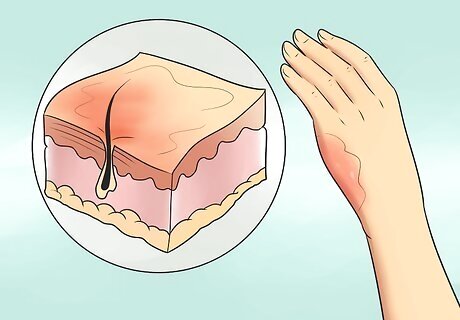
Determine whether you have a first-degree burn. First-degree burns are the most common burns. You have a first-degree burn if only the outermost layer of skin is affected. These are the least severe type of burn and can usually be treated at home. Symptoms involve: Pain Area is sensitive to the touch and warm to the touch Minor swelling Reddening of the skin
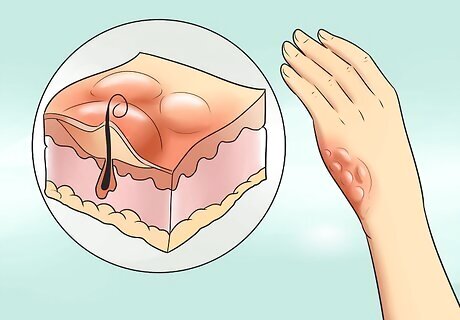
Examine whether you have a second-degree burn. Second-degree burns are more serious than first-degree burns. The damage goes beneath the outer layer of skin to affect the layer underneath. You may have a scar after it heals. Symptoms of a second-degree burn include: Pain Swelling Blistering Red, white, or blotchy skin Reddened areas “blanch,” or turn white, when pressed with finger The burned area may look wet
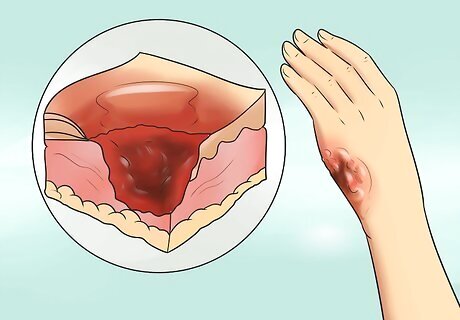
Identify a third-degree burn. Third-degree burns involve severe damage that includes tissues beneath the skin such as the layer of fat below the skin and possibly even the muscle or bone. Symptoms include: A waxy or leathery appearance to the skin Reddened areas do not “blanch” or turn white when pressed on, but remain red Swelling Black or white areas on the skin Numbness where the nerves have been damaged Breathing problems Shock — pale, clammy skin, weakness, blue lips and fingernails, and decreased alertness
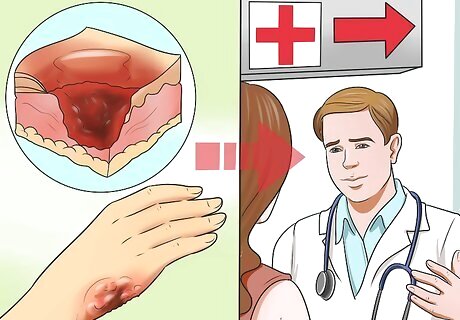
Seek medical care if needed. Someone with a third-degree burn requires immediate emergency care and EMS (9-1-1) should be called. If you have less serious burns you may still need to go to the emergency room. Seek professional medical care if: You have a third -degree burn. You have a second-degree burn that covers more than 3 inches of skin. You have a first or second-degree burn on your hands, feet, face, groin, buttocks, or a joint. The burn is infected. Infected burns may seep liquid from the wound, and have pain, redness and swelling that gets worse over time. The burn has extensive blistering. You have a chemical or electrical burn. You have inhaled smoke or a chemical. You have problems breathing. Your eyes have been exposed to a chemical. You are uncertain of the severity of the burn You have severe scarring or a burn that doesn’t heal after a few weeks.
Treating Minor (First- and Second-Degree) Burns at Home
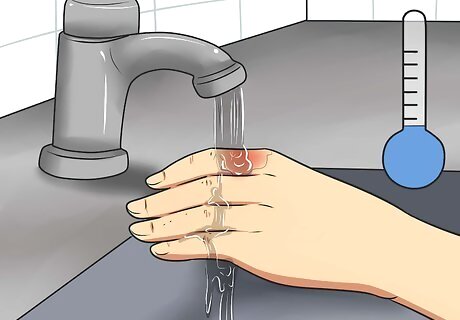
Soothe the burn with cold water. Cool water will lower the temperature of the burned area and stop the damage from progressing. Gently run cool water over the burn for at least 10 minutes. If the movement of water flowing over the burn is too uncomfortable, you can apply a clean, cool, wet towel. Do not put ice or very cold water on the burn. The extreme temperatures may increase the damage to your tissues.
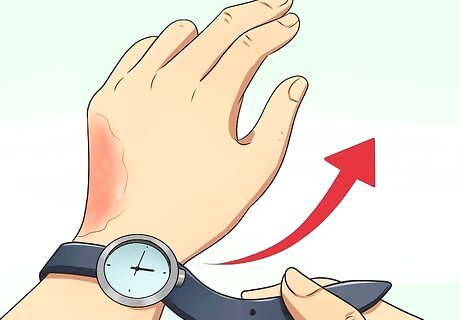
Take off jewelry that is on the affected area. If you have jewelry or other items that may restrict blood flow if the area swells, remove it immediately. Items that may need to be removed include rings, bracelets, necklaces, anklets, or any other item that could cut off circulation during swelling. Swelling will start immediately so remove the items as soon as possible, but do so gently to avoid further irritation to the damaged tissues.
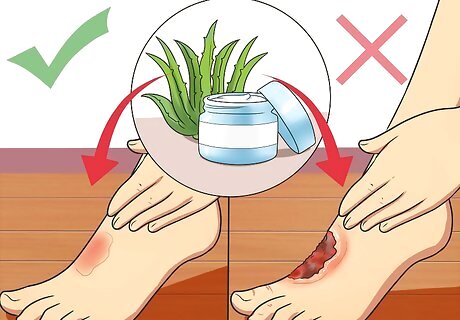
Apply aloe on the burns that are not open wounds. The gel from aloe plants reduces pain and inflammation. It also promotes healing and helps your body repair damaged skin. Do not apply it to an open wound. Aloe is found in many gels and moisturizers. If you have a commercially prepared aloe vera gel, apply it according to the manufacturer’s instructions. If you have an aloe plant in your house, you can obtain the gel directly from the plant. Break off a leaf and split it open lengthwise. You will see a clear, greenish goo inside. Dab it directly onto the burn and let it absorb into the skin. If you do not have aloe, you can apply another moisturizer to prevent the burn from becoming too dry as it heals. Don’t put greasy materials like butter on the wound.
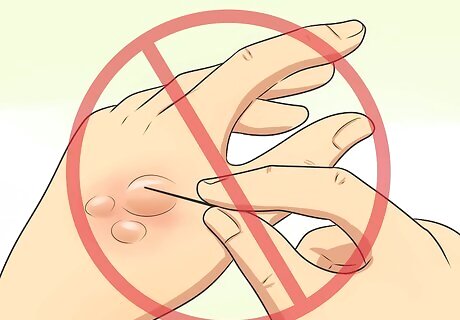
Don’t pop blisters. If you pop blisters, this creates an open wound and makes you vulnerable to an infection. If the blisters burst on their own you should: Wash the wound with soap and clean water. Gently dab an antibiotic cream over the area. Protect the area with a nonstick bandage. Go to the doctor if you have blisters that are larger than 1/3 of an inch in diameter, even if they have not burst.
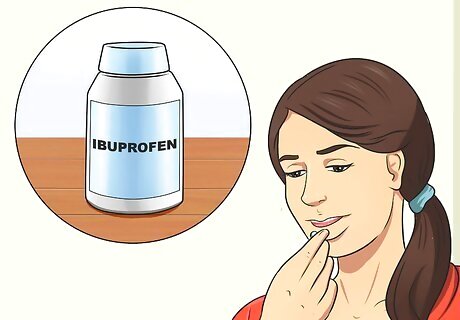
Combat pain with over-the-counter medications. Burns can be extremely painful. You may need painkillers to help you get through the day or fall asleep at night. Over-the-counter medications like non-steroidal anti-inflammatory drugs (NSAIDs) can be effective; however, they may interfere with other medications so discuss them with your doctor before taking them. Medications with aspirin should never be given to children. If your doctor says it is ok for you, you can try: Ibuprofen (Advil, Motrin IB) Naproxen sodium (Aleve) Acetaminophen (Tylenol)
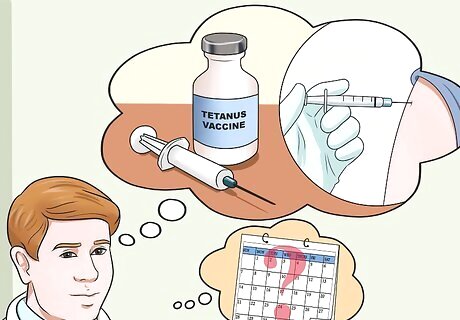
Check to see if your tetanus shot is up to date. Tetanus is a disease that occurs when the tetanus bacteria infect an open wound. Your doctor will likely suggest that you get a tetanus shot if: The burn caused a deep wound or it is dirty. You haven’t had a tetanus shot in the past five years. You don’t know when your last tetanus shot was.
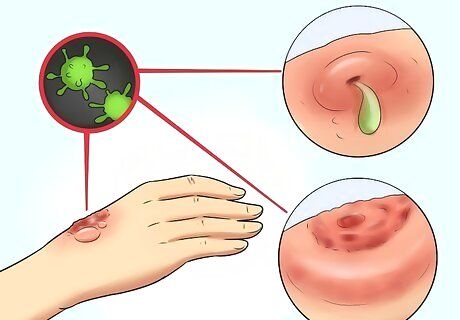
Monitor the burn for signs of infections. Your skin provides you with a barrier against pathogens in the environment. A burn makes you vulnerable to infection. If you develop any of the following symptoms, go to the emergency room right away to have it checked by a doctor: Pus or fluid seeping from the wound Swelling, redness, or pain that increases over time Fever Red streaks spreading from the burn site
Put silicone sheets on any burn scars to help them disappear. Tear off the adhesive backing on the silicone sheet and press it over the burn scar to help keep it hydrated. When the adhesive on the sheet wears off, take it off and put a new one on. Over a few days, the scar will flatten and won't look as noticeable. This only works on new scars that are still red in color. If your scar looks white or brown, you may need laser treatment instead.














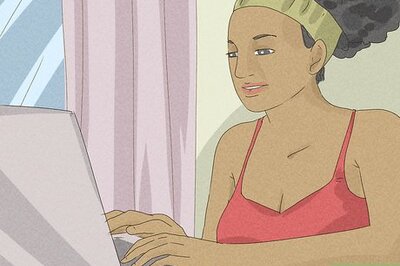

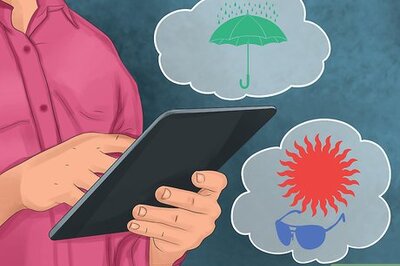


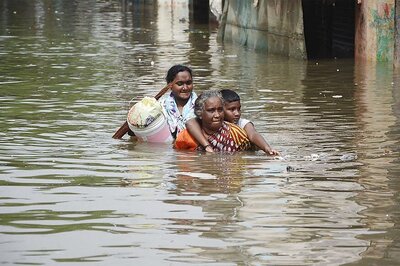
Comments
0 comment